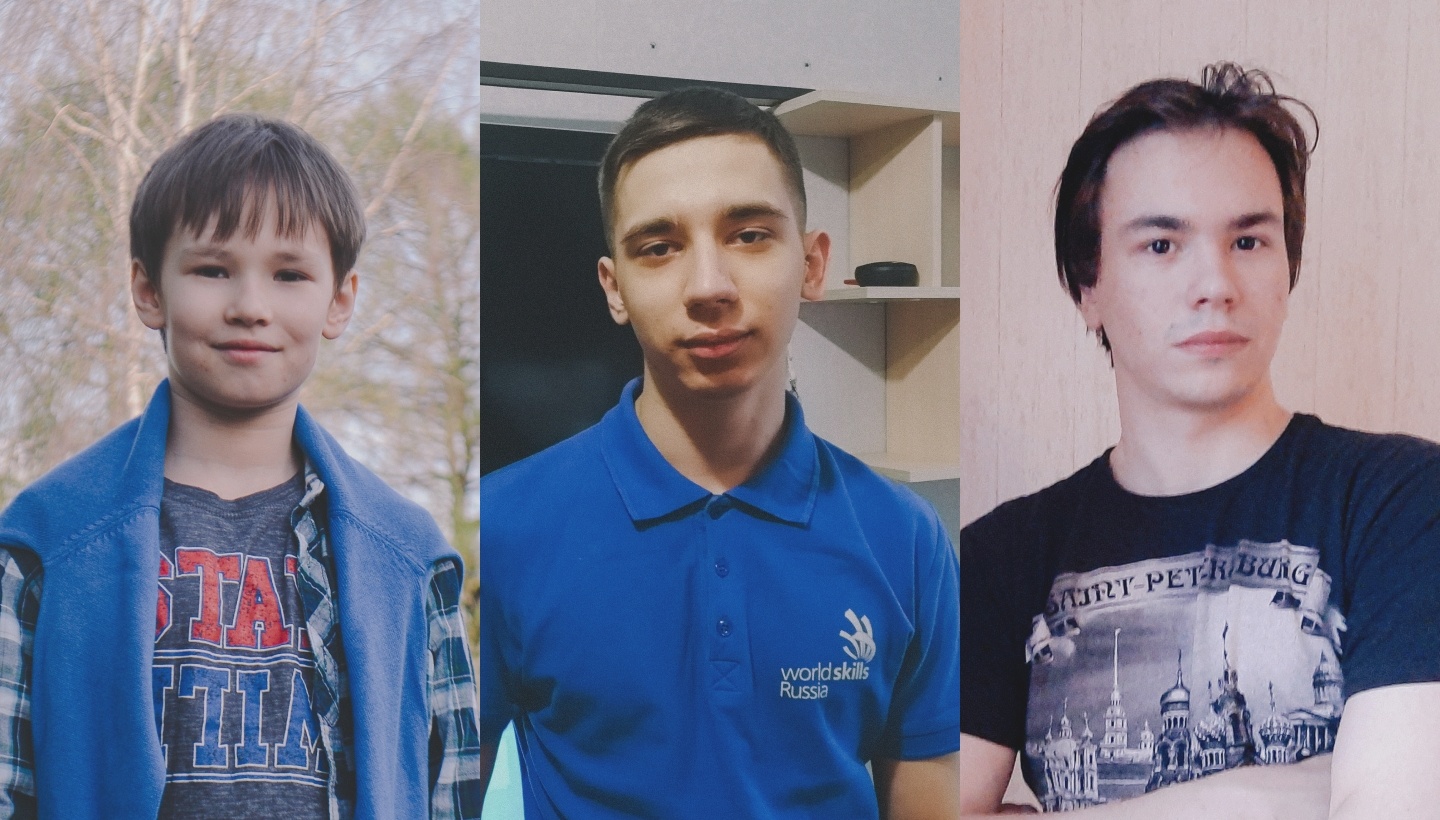



«Roboazbuka», customized prosthetic arm and a multifunctional CNC machine — it may sound unbelievable, but the oldest inventor of these is eighteen, and the youngest is only ten years old! All of them are finalists of «Rukami» — a competition of technical creativity, initiated by RVC. Three young makers told us about the «Rukami» festival, their projects and plans for the future.
"I wanted to make something cool"

Makar Nuriev
17-year-old from Tatarstan
created a myoelectric upper limb prosthesis
— I wanted to make something cool and, remembering the problems that people with disabilities are facing in Russia, I realized what it should be. I began researching relevant scientific articles and I also remembered my mother’s friend who lost his right arm.
So I decided to create a prosthesis, which would allow users to alter its design. This is the main benefit of my invention: each detail is individually selected for a particular person. Plus, its design is adaptive: you can choose from preset options or customize. There are also a number of software improvements: unlike contemporary processors from other companies, my invention uses a three-phase neural network instead of the usual three-stage one. The difference is that a three-phase neural network consists of further three neural networks — thus, it is stronger and more advanced. Such technology is not yet available on the market for prostheses.
I have created a prototype, but it is not in use yet — I am still working on it. Human arm is very complex — it is connected to the spinal cord via nerve endings, each of which sends unique signals. First, I have to collect the statistics of these neural signals, finding their similarities and differences. I can begin to study the data after I have collected information from approximately 100 test subjects. Then I can determine the differences and the similarities in data from different people’s arms — this is the final stage of development. So far I have tested the invention on people with both arms, with one exception: the only test subject without a right limb achieved similar results to the indicators of a person with both limbs, but the impulses to the prosthesis were weaker. This lead me to an understanding that the prototype needs an additional amplifier to strengthen the signal.
At the moment I have two options that would allow me to develop the project further. I submitted my resume for an internship at the «Motoriсa» company, which would allow me to work with the required number of test subjects. Alternatively, I could work with state rehabilitation centers, but I will need government’s support for that. I know how to introduce this product onto the market, but this process requires a lot of time and effort.

Details
The goal of the project is to attract the attention of young people and the general public to technical creativity, making, and creating individual projects in technological clubs. Rukami festivals, at which students from Russian universities and high schools show their projects, are held in the regions, and then the finalists go on to present their inventions in Moscow.


In 2019, The Rukami Tech and Creativity Festivals were held in 10 regions of the country and in Moscow. More than 60,000 guests attended.
I am currently studying in the 11th grade of a boarding school for gifted children with advanced study of chemistry in the village of Dubrovka in the Republic of Tatarstan. I’m working on a number of projects simultaneously — one of them is Hall’s electromagnetic motor, which accelerates particles.
I can’t say that have a clear vision of my future: I can see myself as both a successful businessman and an outstanding scientist. I hope that I won’t have to choose between the two.
"I received valuable advice at the festival"

Daniil Merkushin
an 18-year-old from Naberezhnye Chelny
built a multifunctional CNC machine
— I’m a student at the children’s technical creativity center № 5, and I often use a laser CNC machine there. Unfortunately, there is often a queue to use it, and I can’t always complete what I’ve planned for the day. Then, at my teacher’s suggestion, I built my own unique machine and consequently presented it at the Rukami festival.
I’ve researched similar machines that are currently available on the market — they are expensive and take up too much space. My CNC machine is designed for milling, engraving and 3D printing, and it is competitive in terms of price and size. It took me about six months to build the first version. I received valuable advice at the Rukami festival. For example, with regards to the material of the casing, I was advised to replace plywood with a durable steel profile, which can also be used to store spare parts. Steel casing would also allow me to make the machine even smaller. I also received advice on which electronics to use.
In the capital, the event took place on the main square of VDNH on 31st August and 1st September. The theme of the festival was «Digital evolution: transformation that defines the future». More than 200 teams of university and high school students, which included technical enthusiasts from various parts of the country, presented their projects in 4 tracks: «Man», «Space», «Habitat» and «Fun».


I destroyed the first prototype, because I built it to understand the principles of constructing CNC machines. I will use this knowledge in the future to create a more advanced machine, taking into account the shortcomings of the previous version. The updated model will be collapsible and made of more durable materials.
In terms of education, I want to study design or engineering. I like the idea of working in shipbuilding.
«I want to create something useful»

Georgy Chuchalov
a 10-year-old from Kirov
invented "Roboazbuka"
— My younger brother Arseniy loves books and wanted to learn to read. I thought that I could help him study the alphabet by merging it with his other hobby — robots and mechanisms.
«Roboazbuka» is a set of seven robots with moving parts. My parents contributed their ideas as to what the parts might look like and helped me with the drawings. I used a 3D pen to make the robots. The set also includes cards, which show you how to put different letters together, or you can come up with various options yourself. My brother was very happy when he saw these robots. He started playing with them and could not stop. He has already learned the alphabet and is close to learning to read. He also makes other shapes, such as numbers or images of instruments, with these robots.
Thanks to their moving parts, the robots can change shape. «Roboazbuka» is helpful in learning the letters of the Russian or English alphabet, as well as numbers, colors, shapes and forms. «Roboazbuka» was tested in kindergartens and development centers, and it is now used in several of them, for example, in the city of Slobodskiy.
I became fascinated with robots in pre-school, after seeing the «City of Robots» exhibition. I wanted to learn more about how they work, so I joined the robotics club. Later, I started creating my own models. My parents are very supportive, and so is Maria Lvovna, the head of the club. She helped me with the «Roboazbuka» presentation and a number of other organizational issues.
I’m currently working on a new training kit, which might be 3D printed.
I want to become an engineer or an inventor in the future. I want to create something new and useful.

The festival also housed a lecture hall for parents, where they could approach the leading industry experts to discuss extracurricular education and the benefits of gadgets, or talk about motivating children and bringing them up as future leaders.

